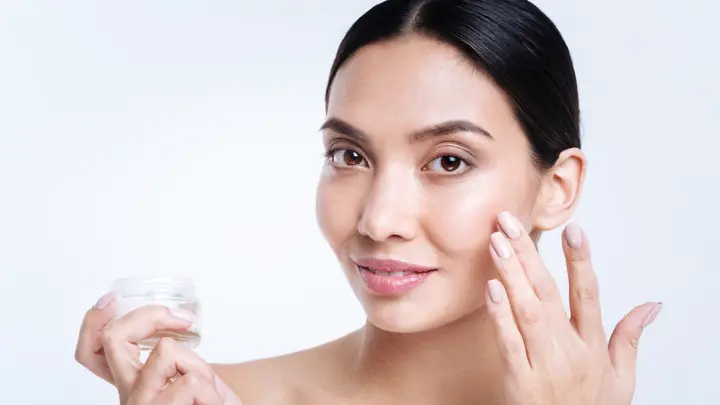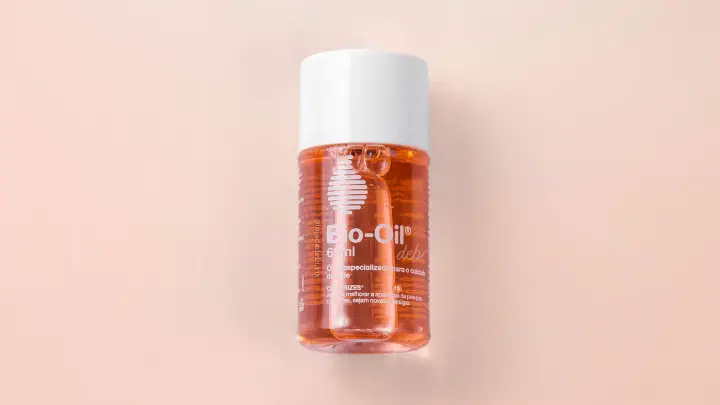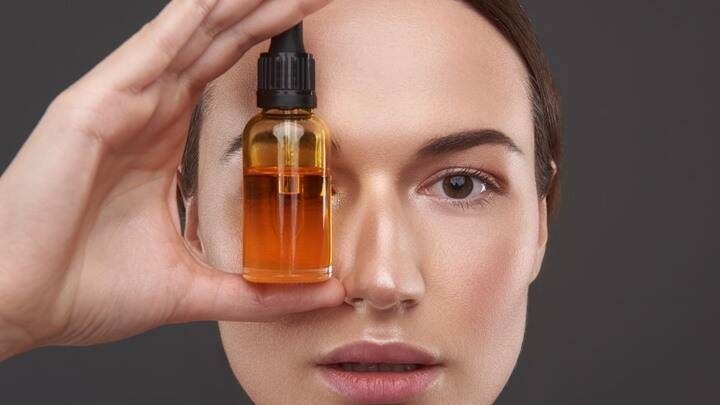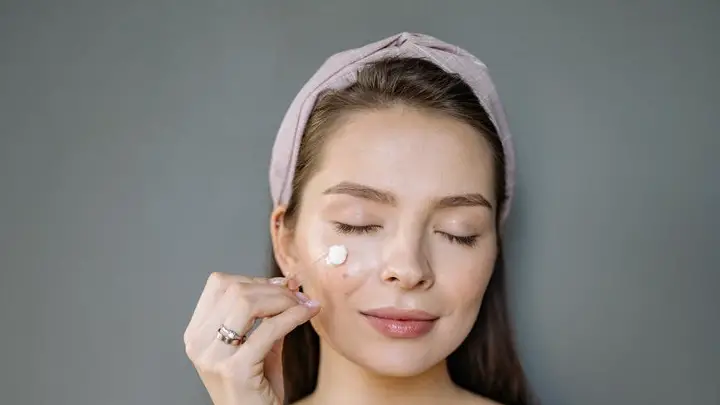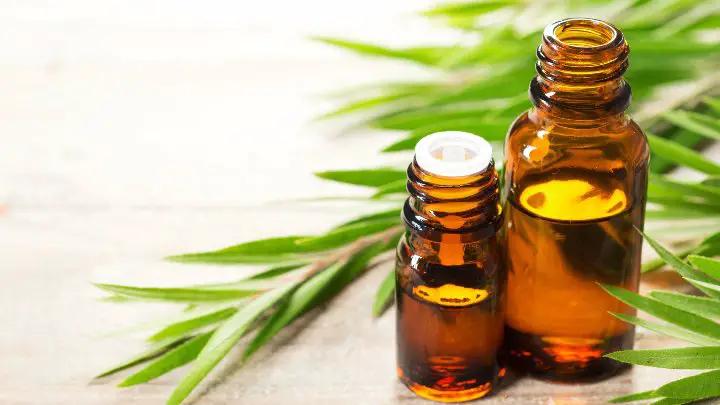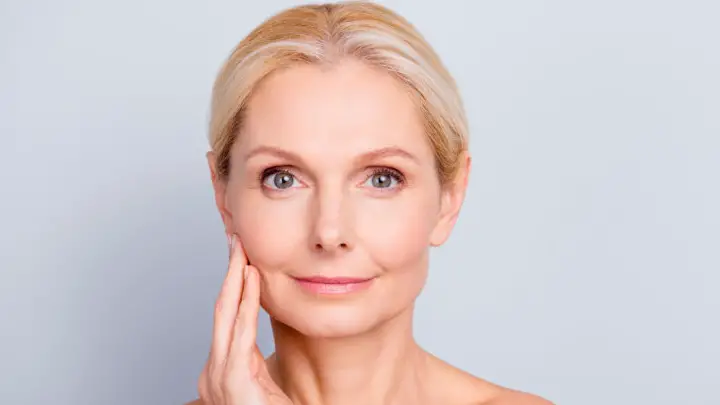Tretinoin with hydroquinone is a combination of two topical medications that can help to treat several types of skin disorders, including acne, hyperpigmentation, and wrinkles.
Tretinoin is a derivative of vitamin A that reduces aging signs and treats acne-related skin conditions while hydroquinone is a skin lightener that treats dark patches of skin caused by sun damage and other factors.
In this article, we’ll discuss what tretinoin and hydroquinone are, their side effects, how to use them together, and what benefits you can expect from using this combination. Keep reading to find out.
What Is Tretinoin?
Tretinoin, also known as all-trans retinoic acid and marketed under the trade names Retin-A, Renova, and Avita, is a medication used primarily for the treatment of acne and other skin conditions.
Tretinoin works by increasing the rate of cell turnover, thereby helping the skin renew itself more quickly than normal. It’s one of the few medications that can treat acne by reducing the amount of oil produced by oil glands.
Tretinoin also works by increasing the skin’s production of collagen, therefore helping the skin retain its elasticity. This process is called remodeling. As a result of this action, tretinoin helps smooth out wrinkles and fine lines in patients.
Side Effects Of Using Tretinoin
Common side effects of tretinoin include redness, scaling, burning, itching, dryness, and stinging or irritation of the skin.
Tretinoin also increases the sensitivity of your skin to sunlight, so it’s important to use sunscreen when you’re outside. It’s also a good idea to wear protective clothing and sunglasses outdoors.
What Is Hydroquinone?
Hydroquinone is a chemical agent and is used as a skin bleaching agent. Its most common use is to lighten skin and treat freckles, age spots, melasma, and other forms of hyperpigmentation.
It’s used in several countries as an over-the-counter treatment for acne, but the FDA has banned it from these uses in the U.S. because of its serious adverse effects.
Hydroquinone is sold in different concentrations with strengths ranging from 2% to 4% hydroquinone. Products containing higher concentrations of hydroquinone may be more effective at lightening dark patches of skin but come with higher risks.
On the other hand, products with lower concentrations may not lighten dark patches as much but are generally safer for the skin. You can find hydroquinone in both over-the-counter products such as lotions and prescription creams.
Side Effects of Using Hydroquinone
The side effects of prescription hydroquinone may include skin irritation, contact dermatitis, inflammation of the skin, and hyperpigmentation.
Also, there have been reports of serious hydroquinone side effects, including allergic reactions and even cancer, in some severe cases.
You should not use this product without consulting a doctor first. These side effects are rare but they do occur.
Can You Use Tretinoin With Hydroquinone?
Yes, you can use tretinoin with hydroquinone. Hydroquinone works by interfering with the skin cells’ production of melanin; it blocks the creation of skin pigment.
Tretinoin helps to loosen up dead skin cells so that new cells can push them out of the skin’s surface. This makes the top layers of your skin shed quickly while allowing new cells to form beneath them.
Together, these two ingredients will work to treat hyperpigmentation disorders such as age spots, freckles, and melasma, while making your skin appear lighter overall.
However, the combination of tretinoin and hydroquinone should be used with extreme caution. Hydroquinone can cause permanent skin discoloration if you apply it too frequently or at a high concentration.
The amount of hydroquinone in any skincare product will vary depending on the formula. To ensure that you are not over-exposing yourself to hydroquinone, be sure to choose products that contain concentrations ranging from 2% to 4%.
Moreover, if you are currently using tretinoin, you should stop using it for two weeks before beginning the combination treatment. This will allow your skin to return to its original color before it lightens again.
You should also consider getting milder forms of tretinoin before attempting this treatment. While more concentrated formulas will yield faster results, they also pose a greater risk of discoloration and scarring.
How to Use Tretinoin With Hydroquinone
The first thing you want to do is talk with your dermatologist about your skin’s condition and needs. The doctor will examine your skin and then formulate a treatment plan based on their findings.
In determining an appropriate treatment plan, your doctor may consider your age, skin color and condition, the amount of sun exposure your skin receives, and other factors.
Based on their findings, there are several ways your doctor may recommend using tretinoin with hydroquinone. One way is applying the tretinoin at night and then applying the hydroquinone product in the morning.
Another way to use them together is to apply them both at the same time, waiting for one to dry before applying the other. If you use them at the same time, make sure that you cover a small area so that the products don’t get wasted.
Tretinoin and hydroquinone also come as a combination product that you apply to your skin once a day before bedtime. According to Drugs.com, you will likely notice results after about four months of use.
Ensure to keep all follow-up appointments because any adjustments will be made based on what has happened since the last visit. You should also ask questions about your treatment during each appointment so you can be up to date with your skin condition.
What Are the Benefits of Using Tretinoin With Hydroquinone?
- Lightens skin discolorations such as freckles, age spots, melasma, and sunspots
- Increases the skin’s resistance to sun damage, thereby slowing the formation of wrinkles
- Reduces the size of pores, giving your skin a smoother appearance
- Helps prevent and treat acne breakouts
- Promotes collagen production, thereby reducing the appearance of wrinkles and fine lines
- Improves skin tone by decreasing the overall production of melanin
What Are the Side Effects of Using Tretinoin With Hydroquinone?
Using tretinoin with hydroquinone can cause serious side effects, including exfoliative dermatitis, which is characterized by redness and peeling of the skin.
A combination of these ingredients can also lead to contact dermatitis, inflammation, hyperpigmentation, and sensitivity to sunlight.
These side effects typically occur four to eight weeks after starting the treatment. If you experience any of these symptoms while using tretinoin with hydroquinone, stop using both products at once and contact your doctor right away.
Risks and Precautions
- Do not use this combination if you have ever had an allergic reaction to tretinoin or if you have a history of allergic reactions to hydroquinone.
- Do not use this combination if you have liver disease (including cirrhosis), pancreatitis, or any other disease that might increase the risk of side effects.
- Use tretinoin with hydroquinone as directed by your doctor. If you have any questions or if there is an unusual reaction in your skin, contact your doctor.
- Do not get pregnant while taking tretinoin, as it could harm the fetus. If you’re pregnant or plan to get pregnant, speak with your dermatologist before using either product.
- Be careful not to rub tretinoin or hydroquinone into your eyes or lips and wash your hands thoroughly after applying either product.
- Your skin will be more sensitive to sunlight while using this combination, so use a sun protection product with a minimum SPF of 15.
- Use a moisturizer when using tretinoin with hydroquinone to prevent dryness or irritation of the skin. Use only a non-comedogenic (non-pore clogging) moisturizer — look for “noncomedogenic” on the label.
FAQs
How long do tretinoin and hydroquinone take to work?
4–12 weeks. It can take several weeks before you start seeing results when using tretinoin and hydroquinone, so you must use them consistently to obtain maximum benefit from your treatment regimen.
Sunlight also reduces the effectiveness of this combination, so it is best to use sunscreen while taking this medication. It may be best to avoid exposure during peak daylight hours of 10 am to 4 pm when the sun’s rays are strongest.
Can you use hydroquinone with retinol?
Yes, you can. Hydroquinone is a skin lightener, while retinol is a derivative of vitamin A that stimulates skin regeneration to help fight the effects of aging.
These two ingredients work in different ways and at different levels on the skin. By combining them, you can achieve consistently better results in your skincare routine.
Will hydroquinone get rid of dark spots?
Yes, it will. Hydroquinone helps lighten dark spots by preventing tyrosinase, the enzyme that causes melanin production.
Some people see results in as little as a few weeks while others may need to use hydroquinone for several months before seeing improvement. Be sure to follow your dermatologist’s instructions regarding how long to use the cream and how often to apply it.
Conclusion
Tretinoin with hydroquinone is a powerful combination that can help you get rid of acne, aging signs, and hyperpigmentation on your skin.
However, it’s important to consult a dermatologist before using these topical medications. Doing so will help you avoid potential side effects and ensure your skin receives the proper care it needs.
Tretinoin and hydroquinone can also make your skin more sensitive to sunlight. So be sure to use sunscreen and wear protective clothing if you are going to be outside for a prolonged period.
Thanks for reading.
Visit Serum101 to get more information on how these two medications can help restore your skin’s youthfulness.
